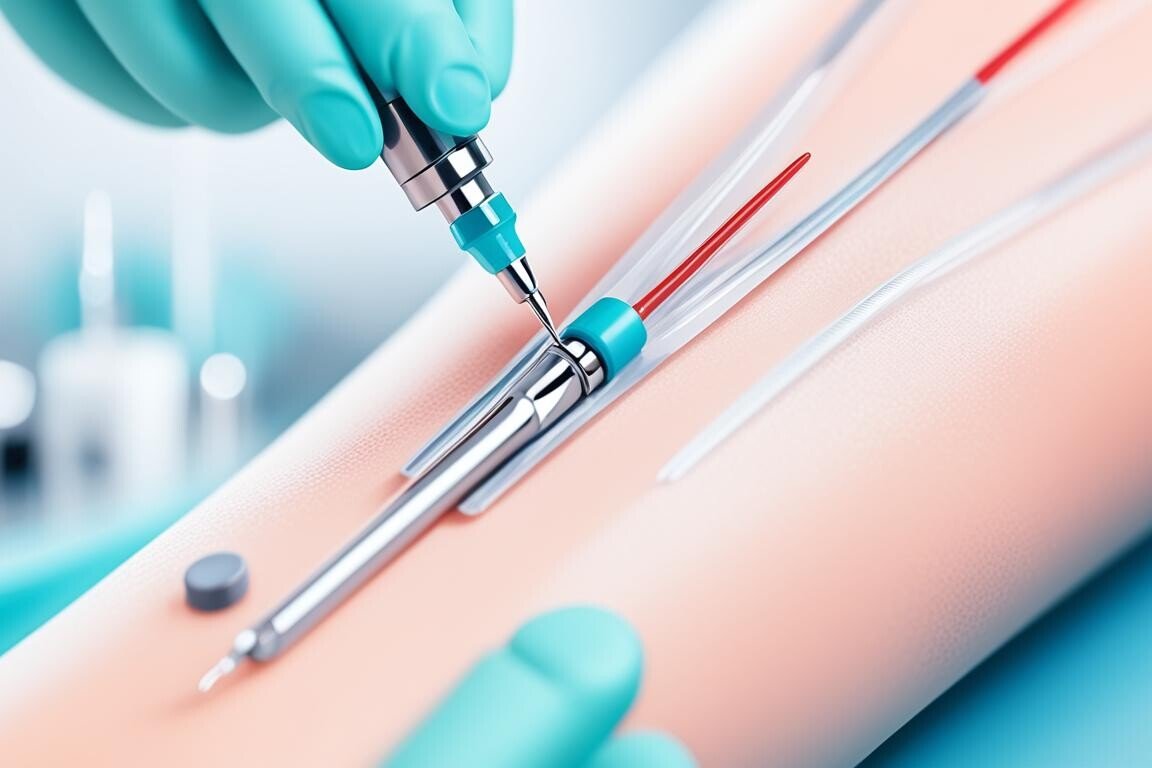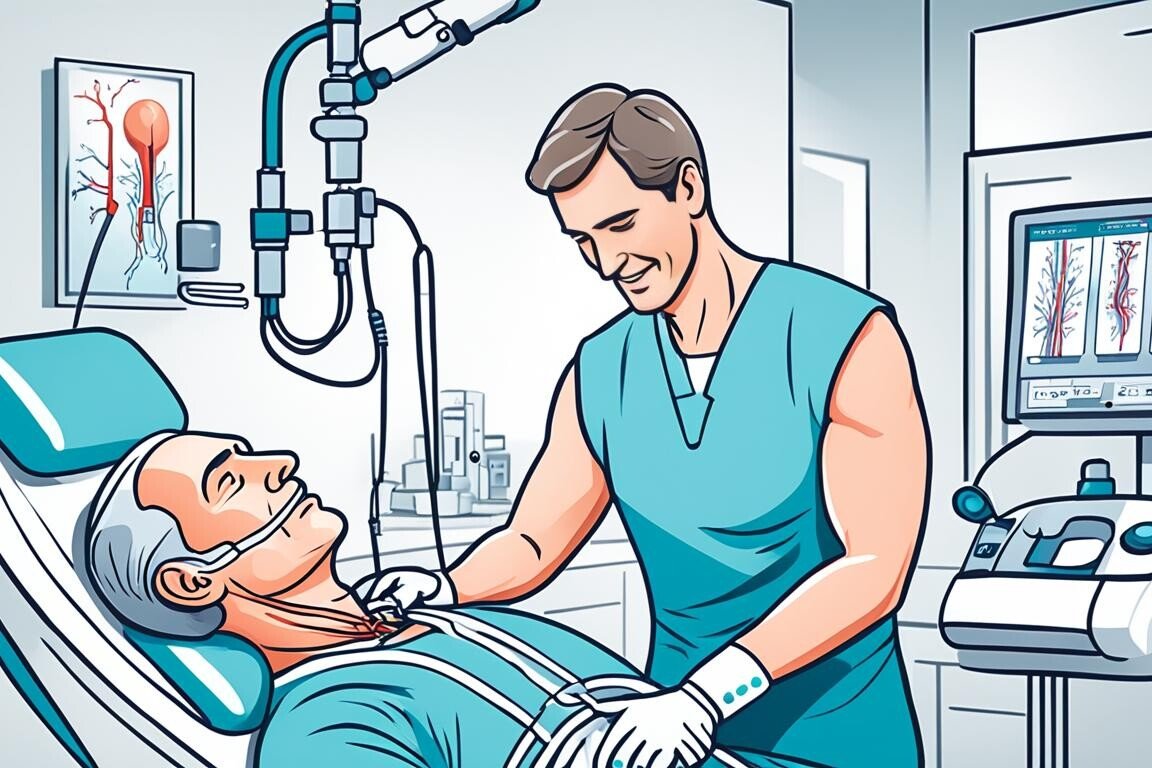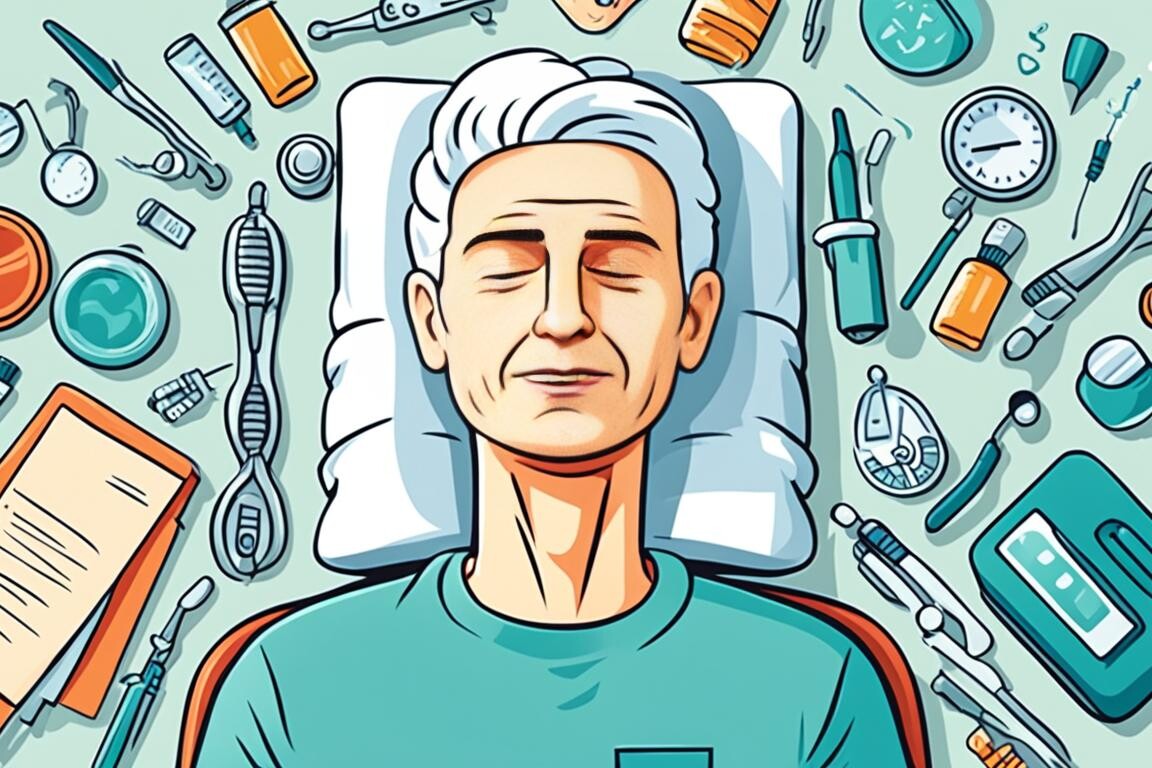Living with central pain syndrome is tough and can really slow you down. This condition happens when the central nervous system gets damaged. It makes you feel pain more easily and even hurts from things that don’t usually bother you. But, there are ways to handle this pain and make your life better.
Understanding central pain syndrome and what causes it is key to coping. Things like stroke, multiple sclerosis, Parkinson’s disease, and spinal cord injuries can lead to it. These conditions cause a variety of pains, from burning to sharp pains. Knowing about these can help you and your doctors find the right treatment.
Handling central pain means using both medical and lifestyle changes. Doctors might suggest medicines like antidepressants or anticonvulsants for pain. They might also recommend physical therapy, cognitive-behavioral therapy, and ways to reduce stress. Taking care of yourself by sleeping well, exercising, and managing stress is also important.
You’re not alone in fighting central pain syndrome. Joining support groups and finding resources can give you a lot of help. It can make you feel less alone and help you find ways to deal with the pain. Being active in your care and having a caring network around you can make a big difference.
Table of Contents
ToggleUnderstanding Central Pain Syndrome
Central pain syndrome is a complex condition that happens when the central nervous system (CNS) gets damaged. This includes the brain, brainstem, and spinal cord. It’s different from neuropathic pain, which comes from nerve damage. Central pain syndrome changes how the brain and spinal cord handle pain signals.
What is Central Pain Syndrome?
This condition makes people more sensitive to pain. The brain overreacts to things that wouldn’t normally hurt. People with it might feel burning, “pins and needles,” aching, or sharp pain.
Causes of Central Pain Syndrome
It can come from injuries to the brain or spinal cord. Conditions like multiple sclerosis, Parkinson’s disease, and spinal cord injuries can also cause it. Stress, early trauma, and infections might play a role too.
Studies say genetics and environment both play a part in getting central pain syndrome. Fibromyalgia, which affects the nervous system, shares some risk factors. This might make people more likely to have a hypersensitive central nervous system.
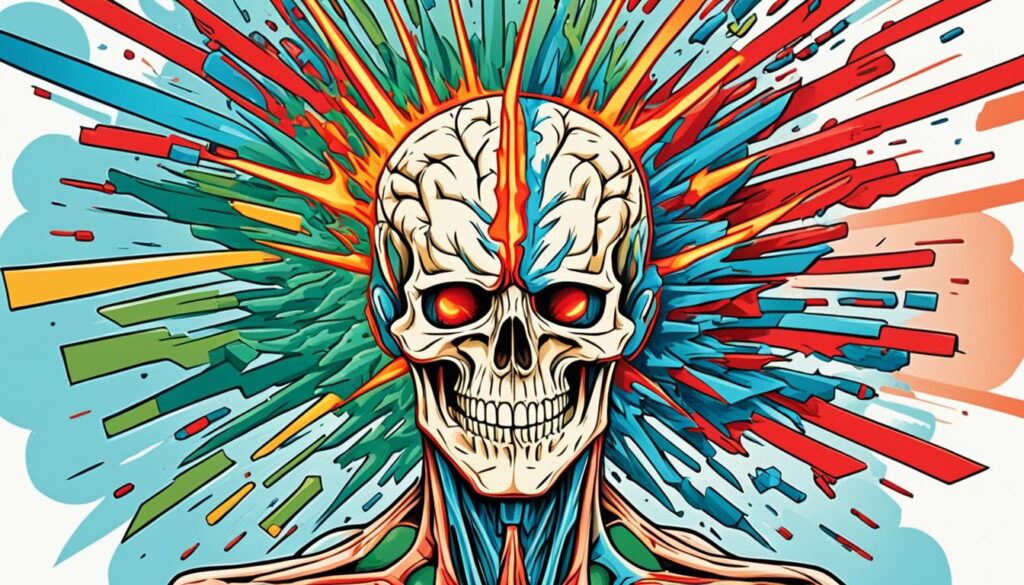
Symptoms of Central Pain Syndrome
Central pain syndrome is a complex condition that affects daily life. It’s a type of neuropathic pain with symptoms that are hard to manage. These symptoms can be both physical and emotional challenges.
Types of Pain Experienced
The main symptom is chronic, unexplained pain that lasts over 3 months. This pain can be constant or come and go. People often describe it as burning, sharp, stabbing, or severe itching.
They might also feel numbness, tingling, or a “pins and needles” feeling (paresthesia). This makes everyday activities tough.
Associated Symptoms
- Heightened sensitivity to touch or temperature (hyperalgesia and allodynia)
- Anxiety, depression, and mood disturbances
- Memory problems and cognitive impairment
- Fatigue and sleep disturbances
Having chronic pain, sensory changes, and psychological symptoms can really affect someone’s life. It’s important to understand these symptoms for better management and support.
Risk Factors for Central Pain Syndrome
Central pain syndrome (CPS) is a complex condition that greatly affects a person’s life. Knowing the risk factors helps in early detection and management. Several factors can lead to CPS.
Direct injury to the brain or spinal cord is a big risk. This includes injuries from strokes, multiple sclerosis, or spinal cord trauma. Such injuries can mess with how pain signals work, causing CPS. Chronic pain conditions like fibromyalgia also raise the risk by making the central nervous system more sensitive to pain.
Genetics might also play a part in CPS. If a first-degree relative has CPS, you’re more likely to get it too. This suggests there might be a genetic link.
- Emotional stress and trauma can up the risk of CPS. They affect the nervous system and how we feel pain.
- Depression and obesity are also linked to CPS. They can cause chronic inflammation and change how the body processes pain.
Knowing these risk factors helps doctors spot people at higher risk of CPS. Early action can prevent or lessen the effects of this condition.
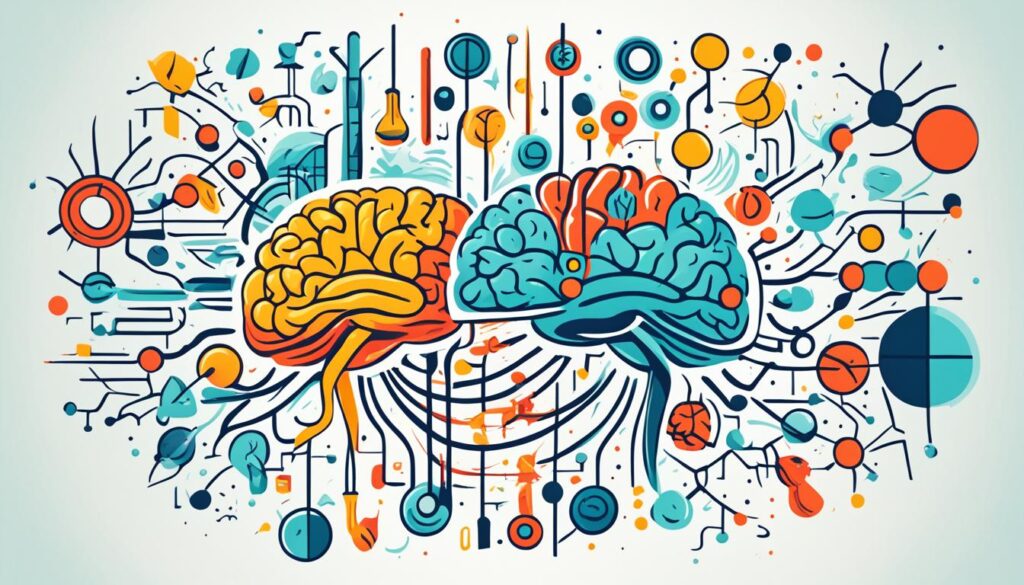
Diagnosing central pain syndrome
Diagnosing central pain syndrome is complex because there’s no single test. Your doctor will start by taking a detailed medical history. They will ask about the onset, location, and nature of your pain. They’ll also ask about any related medical conditions or injuries.
Medical History Evaluation
Your doctor will look into your symptoms during the medical history evaluation. They will consider the following:
- The onset and duration of your pain
- The specific location(s) of your pain
- The characteristics of your pain (e.g., burning, stabbing, aching)
- Any factors that seem to aggravate or alleviate your pain
- Any associated symptoms, such as muscle spasms or changes in sensitivity
- Your medical history, including any injuries, illnesses, or conditions that may be related to your pain
Diagnostic Tests
Your doctor may also order diagnostic tests to find the cause of your central pain syndrome:
- Imaging tests, such as MRI or CT scans, to look for any structural changes or damage to the brain or spinal cord
- Blood tests to check for underlying conditions that may be contributing to your pain
- Electromyography (EMG) or nerve conduction studies to assess nerve function
A diagnosis of central pain syndrome is made by considering your symptoms, medical history, and diagnostic test results. Your doctor will work with you to create a treatment plan. This plan aims to manage your pain and improve your quality of life.
Treatment Approaches for Central Pain Syndrome
Dealing with central pain syndrome often means using a mix of treatments. This includes lifestyle and mental health changes. These are key to managing this complex condition.
Lifestyle and Mental Health Strategies
Physical therapy can boost mobility and function for those with central pain syndrome. It helps improve overall well-being. Cognitive-behavioral therapy is also useful. It helps develop ways to cope with chronic pain’s mental effects.
Stress management, like mindfulness and meditation, can ease the mental and emotional load of central pain syndrome. Exercise, suited to each person’s abilities, helps with pain control and better health.
It’s important to tackle any mental health issues, like anxiety or depression, for better pain management. Mental health experts offer valuable advice and strategies. This helps with the emotional and psychological sides of the condition.

- Physical therapy to improve mobility and function
- Cognitive-behavioral therapy to develop coping mechanisms
- Stress management techniques like mindfulness and meditation
- Regular exercise tailored to individual needs
- Addressing mental health conditions like anxiety and depression
By adding these lifestyle and mental health strategies to a treatment plan, people with central pain syndrome can better manage their symptoms. This leads to a better quality of life.
Medication Options for Central Pain Syndrome
Managing central pain syndrome often means using a mix of treatments. Medications are key in helping to ease the pain. Unlike regular pain meds, some drugs target the neurological roots of the pain.
Antidepressants
Antidepressants like duloxetine, amitriptyline, and nortriptyline can help with central pain syndrome. They adjust neurotransmitters in the brain to lessen pain. These can be especially useful for those with depression or anxiety, which can make pain worse.
Anticonvulsants
Anticonvulsants, including gabapentin, carbamazepine, and pregabalin, are also useful for central neuropathic pain. They stabilize electrical activity in the nervous system. This can reduce pain intensity and how often it happens. The right medication and dose depend on the patient’s needs and how they react.
Working closely with a healthcare expert, like a neurologist or pain specialist, is crucial. They can tailor a treatment plan for your central pain syndrome. They’ll look at your symptoms, any other conditions, and check how well the treatment is working.
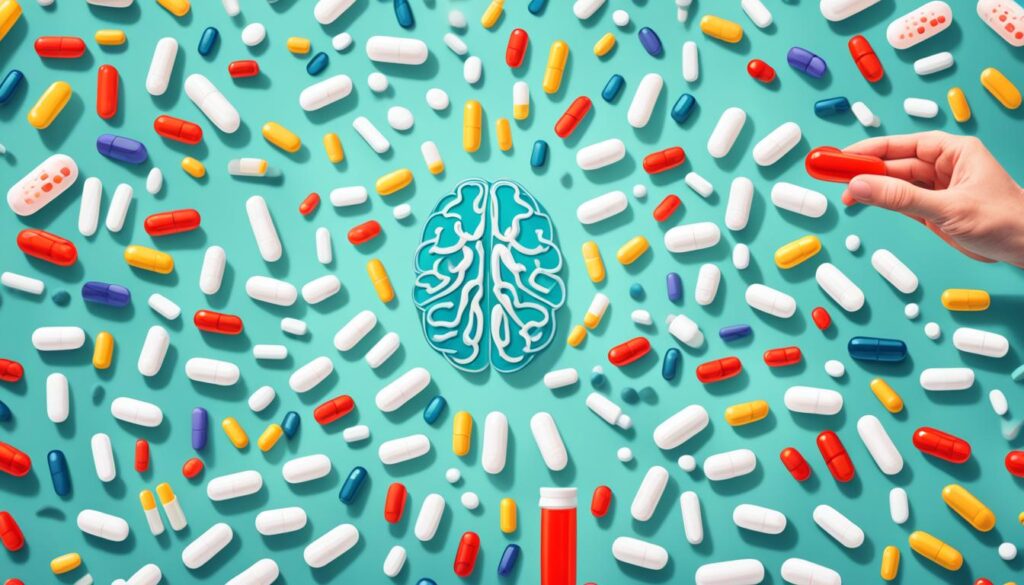
Surgical Interventions for Central Pain Syndrome
When traditional treatments don’t work, doctors might suggest surgery for central pain syndrome. Two surgeries that help manage this condition are motor cortex stimulation and deep brain stimulation.
Motor Cortex Stimulation
For motor cortex stimulation, doctors place electrodes on the brain’s surface. This targets the area that controls movement of the painful area. An implanted device sends electrical pulses to this area, easing the pain for some patients.
Deep Brain Stimulation
Deep brain stimulation puts electrodes deep in the brain’s pain areas. An implanted device sends electrical signals to block abnormal pain signals. This surgery is a long-term solution for neuropathic pain from central pain syndrome.
Not every person with central pain syndrome is a good candidate for surgery. But, it’s a hope for those who’ve tried everything else. Doctors and patients work together to find the best treatment plan for each person.
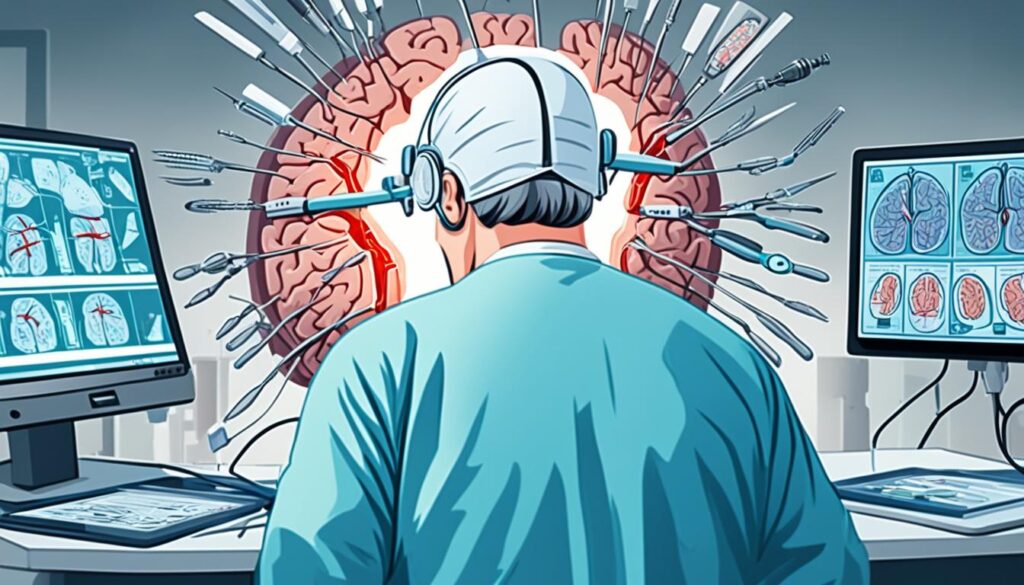
Living with Central Pain Syndrome
Living with central pain syndrome is tough but not impossible. With the right strategies and support, people can manage their symptoms and live better. It’s a journey that requires patience and understanding.
Coping Mechanisms
It’s key to find ways to cope with central pain syndrome. Techniques like mindfulness, relaxation, and pacing can help. These methods help manage stress and energy levels, making it easier to deal with pain.
Support Resources
- Support from family, friends, and doctors is crucial. Joining support groups online or in person can create a sense of belonging. It helps to share experiences with others who understand.
- It’s important to address mental health issues like depression or anxiety. Counseling or therapy can help. These services offer ways to cope and stay positive.
- Trying alternative therapies like acupuncture, massage, or mindfulness can also be helpful. They can be part of a plan to manage pain.
Using coping strategies and support can make a big difference. People with central pain syndrome can improve their lives and adapt to their condition.
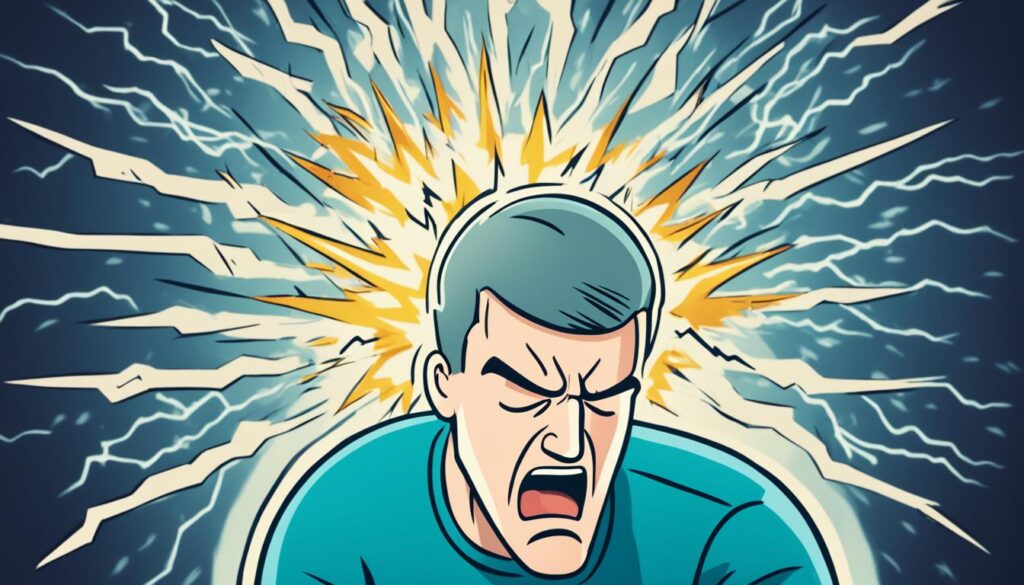
Genetic Factors In Central Pain Syndrome
Studies show that genetics are key in developing central pain syndrome. If you have a first-degree relative with the condition, your risk goes up by eight times. This includes parents, siblings, or children.
We haven’t found the exact genetic mutations yet. But, it’s clear that some people are more likely to get central pain due to their genes. Researchers are looking into how genes and environment work together to cause this condition.
Here are some important facts about the genetics of central pain syndrome:
- Genes might cause about a third (30%) of chronic regional pain syndrome (CRPS), a type of central pain.
- Some genetic changes, like in the ANO10, P2RX7, PRKAG1, and SLC12A9 genes, make CRPS more likely, especially in men.
- The study of pain genetics is moving fast. Researchers use new tech like whole-genome sequencing to understand how genes and pain interact.
As we learn more about the genetics of central pain, we might find new ways to prevent, diagnose, and treat it. This could make life better for those with this condition.
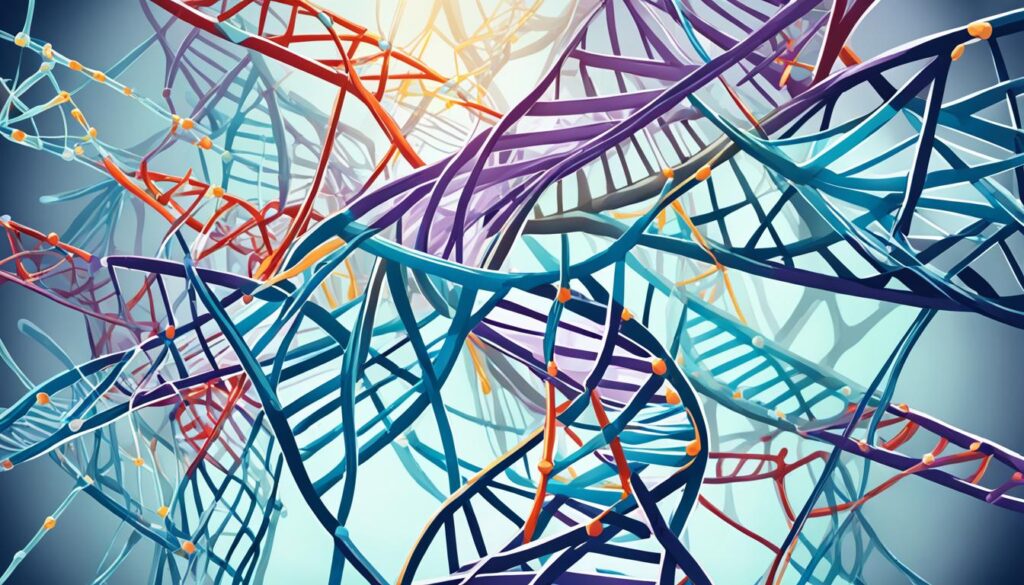
Distinguishing Central Pain Syndrome from Fibromyalgia
Central pain syndrome and fibromyalgia are both chronic pain conditions that affect the central nervous system. But they are different. Central pain syndrome comes from injury or damage to the brain or spinal cord. Fibromyalgia doesn’t have a clear change in the central nervous system.
Fibromyalgia is known for widespread musculoskeletal pain, fatigue, headaches, and digestive issues. These symptoms might not always be seen in central pain syndrome.
To figure out which condition someone has, doctors need a detailed medical history, a thorough physical check-up, and sometimes tests. Knowing the differences between these two chronic pain disorders helps doctors make better treatment plans.
- Central pain syndrome is caused by direct injury or damage to the brain or spinal cord.
- Fibromyalgia does not have a clear structural or functional change in the central nervous system.
- Fibromyalgia is often accompanied by symptoms like widespread musculoskeletal pain, fatigue, headaches, and digestive issues.
- Diagnostic testing, including a comprehensive medical history and physical exam, is crucial to distinguish between central pain syndrome and fibromyalgia.
It’s important for healthcare providers to know the unique traits of central pain syndrome and fibromyalgia. This knowledge helps them give personalized care to people with chronic pain. By understanding the differences, doctors can make treatment plans that meet the specific needs of each patient.
Emerging Treatments and Research
Researchers are looking into new ways to help with central pain syndrome. They’re checking out hypnosis, transcranial magnetic stimulation (TMS), and deep brain stimulation. These methods could change how we treat pain.
Hypnosis might help reduce pain and make it easier to manage for people with central pain syndrome. It works by focusing the mind and making it more open to suggestions. This can affect how the brain processes pain.
Transcranial magnetic stimulation (TMS) doesn’t need surgery and uses magnetic fields to reach the brain. It could help lessen central pain syndrome symptoms by changing how the brain handles pain.
- TMS is being looked at as a way to treat chronic pain, including central pain syndrome.
- Studies are checking if TMS is safe and works well over time for central pain syndrome.
Deep brain stimulation (DBS) is another new method being studied. It involves putting electrodes in the brain to send electrical signals. These signals might help reduce pain and improve pain management.
We need more research to see how these new treatments work long-term. But they give hope to people with central pain syndrome who haven’t found relief with other treatments. Ongoing studies and trials are key to improving our understanding and care for this condition.
Conclusion
Central pain syndrome is a tough condition that needs a detailed approach to handle. By understanding its causes, finding risk factors, and looking at different treatments, people with central pain syndrome can work with doctors to manage their symptoms. This helps improve their life quality and cope with chronic pain.
There’s still much to discover about this condition. But, ongoing research and new treatments offer hope for those with central pain syndrome. From genetic studies to new treatments and focusing on mental health and lifestyle, there are many ways to find relief from pain.
By staying informed, asking for personalized care, and using coping strategies, people in India can manage their central pain syndrome better. Remember, you’re not alone in this fight. There are resources and support out there to help you deal with this complex condition.
FAQ
What is central pain syndrome?
Central pain syndrome is a long-term condition. It changes how the brain and spinal cord handle pain signals. This leads to feeling more pain and pain from things that don’t usually hurt.
What causes central pain syndrome?
It can happen after injury or damage to the brain or spinal cord. Conditions like multiple sclerosis, Parkinson’s disease, and spinal cord injuries can also cause it.
What are the main symptoms of central pain syndrome?
The main symptom is ongoing, unexplained pain that lasts over 3 months. This pain can be constant or come and go. People may feel burning, sharp, stabbing, or severe itching pain.
They might also notice changes in touch, like numbness, tingling, or a “pins and needles” feeling.
What are the risk factors for developing central pain syndrome?
Risk factors include injuries or damage to the brain or spinal cord. Conditions that cause ongoing pain, genetic factors, emotional stress, psychological trauma, depression, and obesity also increase the risk.
How is central pain syndrome diagnosed?
Doctors diagnose it by looking at your medical history, doing a physical check-up, and possibly using imaging tests and blood tests to rule out other conditions.
How is central pain syndrome managed?
Treatment involves a mix of lifestyle changes, mental health support, medicines, and sometimes surgery. This includes things like motor cortex stimulation or deep brain stimulation.
What role do genetics play in central pain syndrome?
Genetics are very important in developing central pain syndrome. If you have a family member with it, your risk is much higher.
How is central pain syndrome different from fibromyalgia?
Both conditions are chronic pain issues affecting the central nervous system. But, central pain syndrome comes from direct injury or damage to the brain or spinal cord. Fibromyalgia doesn’t have this specific cause.
What are some emerging treatments for central pain syndrome?
Researchers are looking into new treatments like hypnosis, transcranial magnetic stimulation, and other neuromodulation methods. These aim to change how the central nervous system handles pain.
Source Links
- Centralized pain syndrome: Symptoms and treatment
- Central Pain Syndrome (CPS): Symptoms & Treatment – Dr Deepak Agrawal
- Review of the Treatments for Central Neuropathic Pain
- Antidepressants, Other, Anticonvulsants, Analgesics, Nonsteroidal Anti-Inflammatory Drugs
- Evidence of a genetic background predisposing to complex regional pain syndrome type 1
About The Author

This article is medically reviewed by Dr. Chandril Chugh, Board-Certified Neurologist, providing expert insights and reliable health information.
Dr. Chandril Chugh is a U.S.-trained neurologist with over a decade of experience. Known for his compassionate care, he specializes in treating neurological conditions such as migraines, epilepsy, and Parkinson’s disease. Dr. Chugh is highly regarded for his patient-centered approach and dedication to providing personalized care.
→ Book a consultation to discover which remedies suit your needs best.


